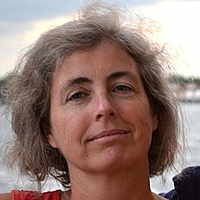ABSTRACT: The ARCS mission goal is decode the aurora by exploring the relationship between the visible aurora and distributed currents and flow fields, to unlock critical physics of the auroral ionosphere at mesoscales. The ARCS swarm produces low-resource observations for system science enabling progress toward the “Diversified and Distributed Sensor Deployment Strategy” envisioned in the NAS Decadal Appendix C. 32 satellites in 8 planes with repeat ground tracks will cross over 32 groundbased observatory sites in Alaska. The orbits are sun-synchronous at 561 km altitude and 97 degree inclination. The 32 GBO sites contain filtered imagery for the creation of maps of precipitation average energy and energy flux; they also contain transmitters for a local TEC network, to work with receivers on the spacecraft.
ARCS generates novel, high fidelity, two-dimensional electric and magnetic field maps from an in situ CubeSwarm in concert with dense ionospheric tomography and ground-based multispectral auroral imaging. The final link in the fundamental global magnetic convection cycle is reflected in, and possibly governed by, these fields and associated aurora. Mesoscale flows, currents, and auroral structures represent significant ionospheric energy inputs at auroral latitudes, creating a variety of geophysically important responses and space weather impacts. These are fundamental processes occurring at magnetized planets and moons with ionospheres.
ARCS is a next-generation mission consisting of the first-ever swarm of NASA science-grade CubeSats coupled with a dense grid of custom, ground-based observatories. The ARCS science objectives are: (1) map the 2D mesoscale structure and temporal evolution of plasma flows and currents in the auroral iononosphere; (2) determine how these 2D maps of plasma flows and currents self-consistently evolve in conjunction with auroral ionospheric density responses; (3) determine the roles of the physical mechanisms regulating the relationships between the flows, currents, auroral forms and precipitation in the auroral ionospheric system.
